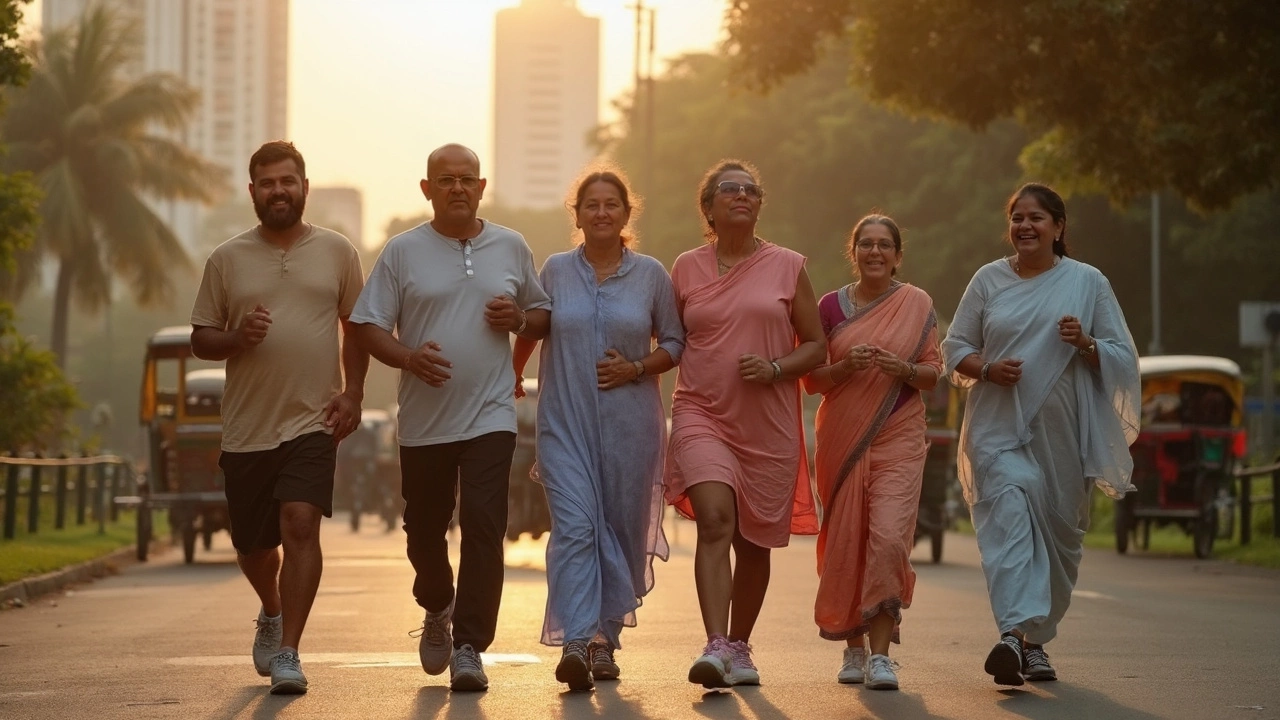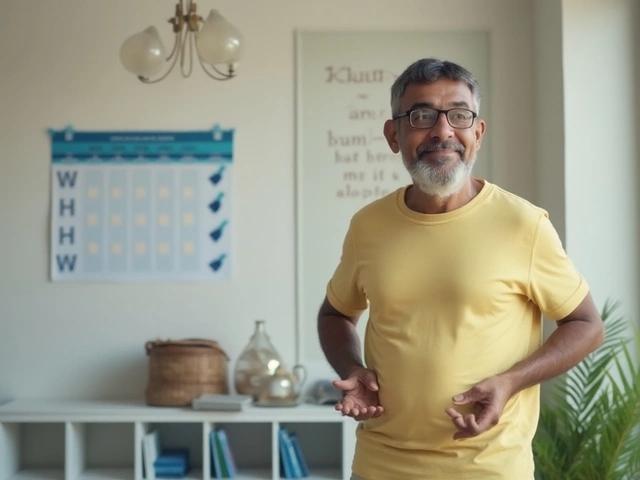
So, how many pounds can you really expect to lose in 30 days? It’s not as much as you see in those before-and-after ads. Most weight loss clinics shoot for 4 to 8 pounds a month—yeah, that’s just about 1 to 2 pounds a week. It might not sound dramatic, but that’s actually what real science and doctors agree is safe and sustainable.
Trying to drop 20 pounds in four weeks might seem tempting, especially when summer’s around the corner or you see stories online. But here’s the thing: losing weight too fast usually means you’re losing water, maybe some muscle, and not as much body fat as you think. And that’s a recipe for putting it all back on (sometimes with bonus pounds) because your body hates crash diets.
If you want results that actually last, start thinking about what works for real people. Clinics look at your health history, habits, and lifestyle, not just the number on the scale. So your plan won’t look the same as your friend’s or that fitness influencer on TikTok. The first step? Set a goal that’s honest—and something you can actually stick with when life gets busy or stressful.
- What’s a Realistic 30-Day Weight Loss Goal?
- How Do Weight Loss Clinics Set Targets?
- Factors That Affect Your Results
- Quick Wins and Common Pitfalls
- Smart Tips to Maximize Fat Loss Safely
What’s a Realistic 30-Day Weight Loss Goal?
If you’re wondering how much weight you should lose in 30 days, here’s the straight-up truth: safe and steady wins the race. Most doctors and weight loss clinics stand by the 1 to 2 pounds per week guideline. That’s about 4 to 8 pounds over a month if you’re consistent. This isn’t just random advice—it’s backed by groups like the Centers for Disease Control and Prevention (CDC), so you know it’s not just a guess.
If you go faster than that, chances are, it’s mostly water leaving your body, not actual fat. Fast weight loss can also mess with your metabolism and make you feel like junk—headaches, crankiness, crazy hunger, and fatigue. No thanks, right?
Check out what the numbers from major health organizations look like:
| Organization | Recommended Weekly Loss | Recommended Monthly Loss |
|---|---|---|
| CDC | 1-2 lbs | 4-8 lbs |
| Mayo Clinic | 1-2 lbs | 4-8 lbs |
| National Institutes of Health | 1-2 lbs | 4-8 lbs |
Feeling tempted to crash diet? Here’s what usually happens instead of lasting results:
- Your body fights back. Starvation signals kick in, and you get hungrier than ever.
- You lose muscle instead of fat, slowing down your metabolism.
- When the diet ends, weight comes back (often more).
If you’re just starting out, you might notice the first week or two the scale drops a little quicker—sometimes 3 to 5 pounds. Most of that is just water. After that, real fat loss starts and it’ll slow down. Stay patient and focus on keeping your results going for the long haul.
How Do Weight Loss Clinics Set Targets?
When you walk into a weight loss clinic, the process isn’t random. They look at your health, lifestyle, and what you actually need—not just what the scale says. There’s no one-size-fits-all magic number. Most clinics follow guidelines from places like the CDC, which recommend aiming for 1-2 pounds per week. That’s slow but steady, and it actually works long-term.
The team will usually check a bunch of things before helping you set your weight loss goal for 30 days. They’ll look at:
- Your starting weight and body fat percentage
- How active you are now
- Your current eating habits
- Any health conditions (like diabetes, thyroid stuff, or high blood pressure)
- Your age and sex (since men and younger people might lose weight a bit faster)
Then they run blood tests or do a proper health check. Some clinics use fancy machines to measure things like muscle mass and water weight, not just what the scale shows. You’ll get a plan that might include:
- How many calories you should eat per day
- What foods to focus on (and which ones to ditch for now)
- How much and what type of exercise will help
If you want numbers, check out this basic chart most clinics use as a starting point:
| Starting BMI | Recommended 30-Day Loss | Notes |
|---|---|---|
| 25-29.9 | 4-6 lbs | Gradual change is key |
| 30-34.9 | 5-8 lbs | Can go slightly faster if monitored |
| 35+ | 6-10 lbs | Initial water loss can be higher |
This isn’t just about dropping numbers. Clinics want you to actually feel better and keep the weight off, so they mix in regular check-ins and support. If things aren’t working after two weeks, they’ll tweak your plan instead of leaving you hanging. That’s the real difference compared to just googling diet tips yourself.

Factors That Affect Your Results
Not everyone loses weight at the same speed, even if they're following a similar plan. Your age, starting weight, and overall health play a big part. For example, people with more pounds to lose often drop a few extra pounds early on, mostly from water weight. But as the weeks go on, things usually slow down and fat loss is what counts most.
Your eating habits might surprise you too. If you’re used to eating out, skipping meals, or munching on snacks late at night, you might see quick progress when you change up these routines. But if you’re already eating pretty healthy, those first few pounds might come off slower, and it can get frustrating if you expect instant changes.
Metabolism is another big deal. The older you get, the slower it usually runs. Hormones also mess with how your body handles food and burns calories—especially during stressful times or, for women, around menopause. Sleep matters more than people think: a week of bad sleep can mess with your hunger hormones and make that late-night pizza way harder to resist.
Let’s not forget activity levels. Even basic things like how often you walk your dog, take the stairs, or move around at work make a dent. But with formal exercise, you’re stacking the odds in your favor—it helps keep muscle while you burn off body fat. If you’re starting with zero exercise, just adding a few walks a week can boost results.
- Weight loss isn’t a simple math equation; your genetics matter too. Some people have genes that make dropping pounds easier or harder, but that isn’t a reason to give up.
- Medications for stuff like depression, high blood pressure, or diabetes can also slow things down. Always check with a doctor—don’t ditch meds on your own, but let your clinic know what you’re taking.
- Stress also hits hard. Research shows high stress cranks up cortisol, a hormone that makes fat stick around, especially around your midsection. Managing stress actually helps your plan work better.
If you’re working with a clinic, they’ll look at these things from the start. The more honest you are about your habits, the better your plan fits your real life—not just what looks good on paper.
Quick Wins and Common Pitfalls
If you’re hoping for some easy wins in your first 30 days, you’re not alone. Lots of people shed a few pounds quickly, especially in the first week. That’s mostly water weight, not fat. When you cut back on carbs or salty foods, your body just holds less water, and the scale drops. It feels great, but it doesn’t last forever, so don’t let that early excitement set unrealistic expectations for the rest of the month.
Some quick wins that really help include:
- Swapping soda or juice for water—saves hundreds of calories a week.
- Getting in at least 7 hours of sleep—lack of sleep messes with your hunger hormones and makes you crave junk food.
- Tracking your meals—many clinics say just writing down what you eat helps cut calories, because we all underestimate snacks.
- Moving more, even if it’s just taking more steps each day—every bit really does add up.
Now for the stuff that trips people up. One big weight loss pitfall is going way too low on calories. That can wreck your metabolism, mess with your mood, and leave you hungry or cranky. Another is obsessing over the scale—your weight can jump up and down for reasons that have nothing to do with fat loss, like hormones or a salty dinner.
Watch out for fad diets or detoxes, too. Clinics see folks coming in all the time after trying juice cleanses or weird supplements and feeling worse than before. Instead of focusing on quick fixes, stick with habits you can actually live with—because bouncing between extremes just makes things harder in the long run.
Bottom line: Celebrate those real wins, like better sleep and more energy. They don’t always show up on the scale, but they keep you moving in the right direction.

Smart Tips to Maximize Fat Loss Safely
If you want fat loss that sticks, forget shortcuts and focus on habits that actually get results. This isn’t about starving yourself or cutting out every food you love. Instead, go for small changes you can handle even when your motivation is low.
Here are tried-and-true tips clinics swear by:
- Track your food honestly. People almost always eat more than they think. Use an app to keep yourself accountable. Writing things down makes a bigger difference than most expect.
- Prioritize protein. Studies show higher protein in your meals helps you stay full and holds onto muscle while you drop pounds. Eggs, chicken, beans, and Greek yogurt are awesome choices.
- Don't drink your calories. Juice, soda, fancy coffee drinks, and even "healthy" smoothies can wreck your progress. Water and zero-calorie options are your safest bet.
- Move your body every day. This doesn’t have to be an hour in the gym. Just a daily walk, a bike ride, even dancing at home counts. Aiming for at least 150 minutes of activity a week is the minimum target clinics recommend.
- Sleep matters more than you think. Getting less than 7 hours a night can mess with your hunger hormones and slow down your fat loss.
- Weigh yourself once a week, not every day. Daily weight changes are mostly water. Weekly check-ins track real progress without messing with your mood.
If you ever wonder if you’re on the right track, many weight loss clinics offer check-ins or workshops to help with motivation and offer personalized tweaks to your plan.
Ignore crash diets promising double-digit drops in a month. Those only work short-term and usually backfire. When you play the long game with habits like these, you’ll notice your clothes getting looser and your energy going way up—without feeling miserable.







